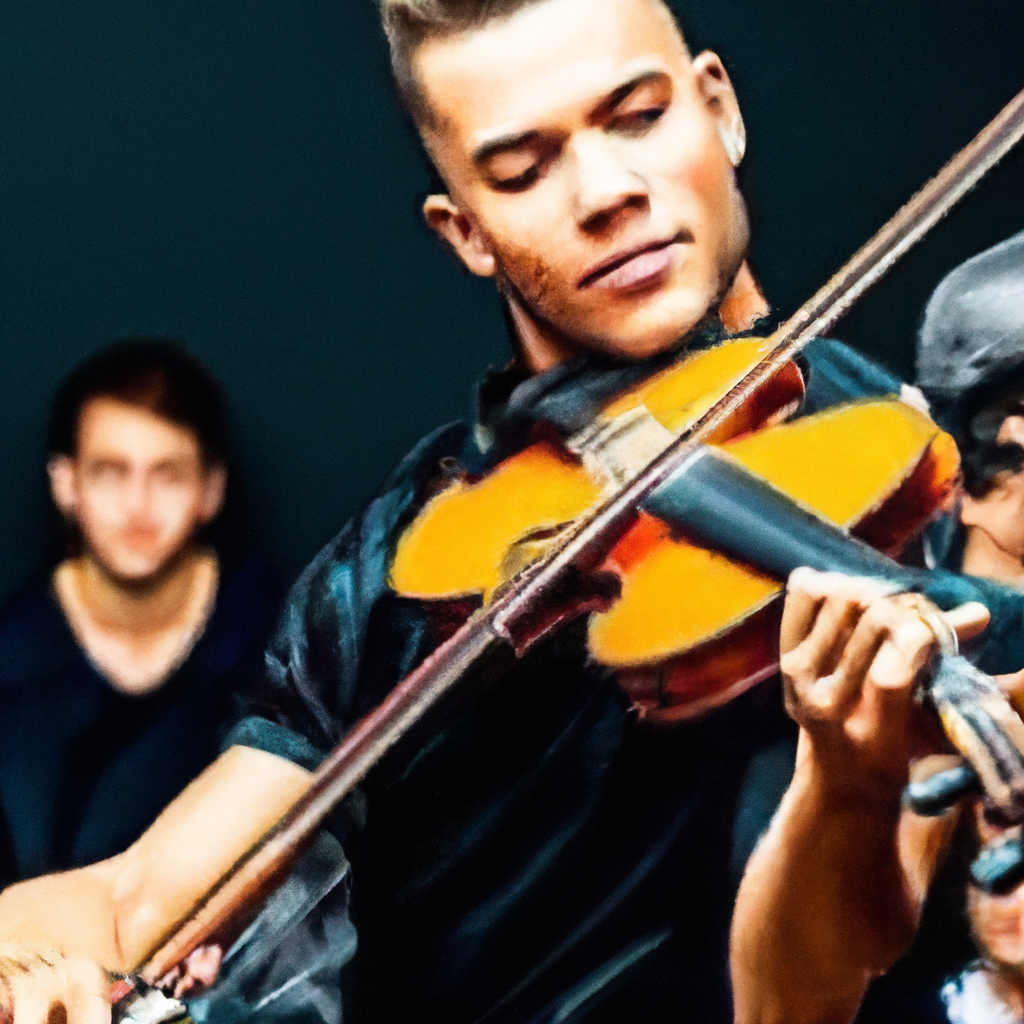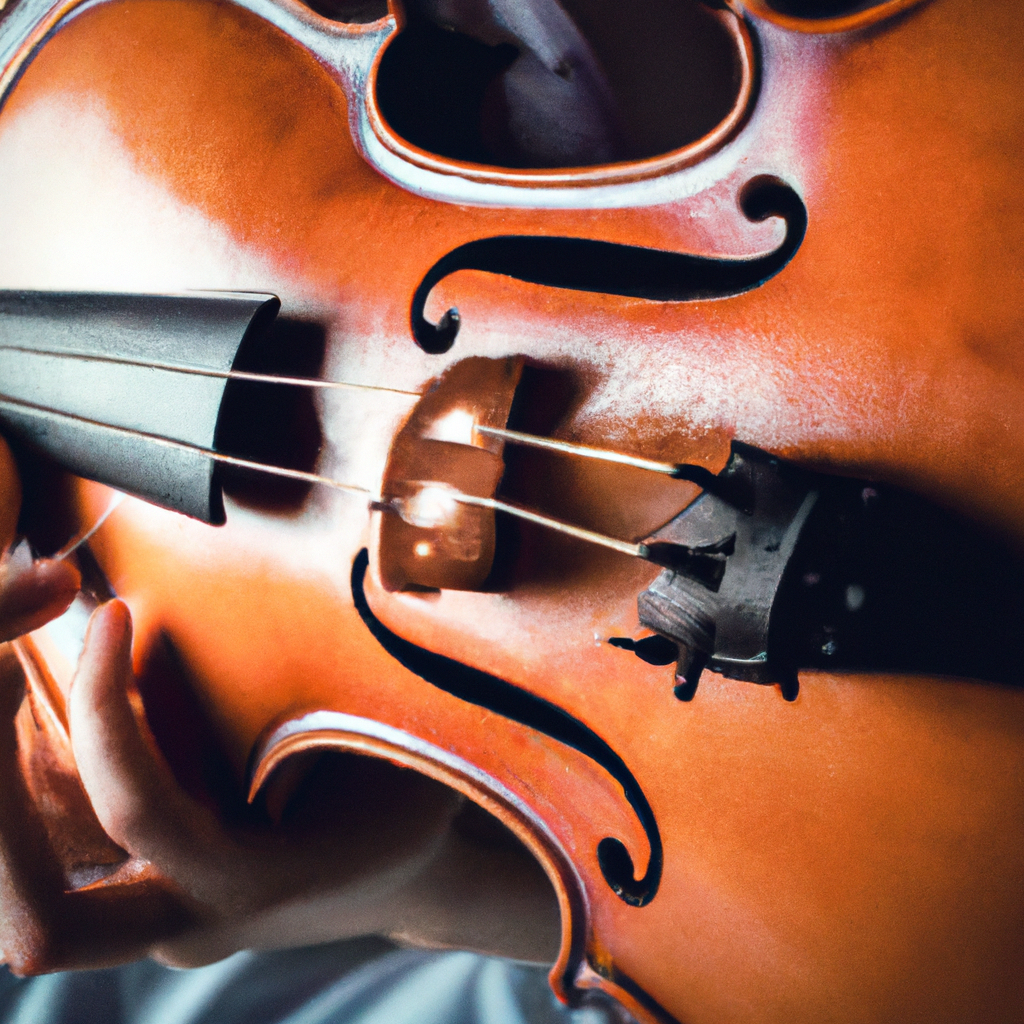
Learning to play the violin offers numerous benefits for individuals of all ages. Whether you aspire to become a professional musician or simply want to enjoy the therapeutic effects of playing music, the violin is an excellent choice. Not only does it enhance cognitive abilities, but it also promotes discipline, patience, and creativity.

This comprehensive article will guide newcomers through every aspect of learning the violin. From finding a reputable teacher to understanding the fundamentals of playing and reading sheet music, this guide covers everything you need to know to get started on your violin journey.

Enrolling in violin lessons provides structured learning and guidance from an experienced teacher. Violin lessons help beginners develop proper technique, receive personalized feedback, and progress at a steady pace. Additionally, a violin teacher can offer valuable insights, motivation, and support throughout the learning process.
When searching for a violin teacher, it's essential to consider their qualifications, teaching style, and experience working with beginners. Look for teachers who have a strong foundation in violin playing and a proven track record of successful student outcomes. Recommendations from friends, music schools, or online platforms can also help in finding a reputable teacher.
Choosing the right violin and accessories is crucial for beginners. Renting a violin initially can be a cost-effective option, allowing you to assess your commitment to learning before investing in an instrument. When purchasing a beginner violin, factors such as size, quality, and budget should be taken into consideration. Additionally, essential accessories like a bow, rosin, shoulder rest, and case are necessary for a complete violin setup.
Before delving into playing the violin, it's essential to familiarize yourself with its basic components. Understanding the parts of the violin, including the body, neck, fingerboard, pegs, tailpiece, and strings, will help you handle and maintain the instrument properly. This knowledge will also aid in future discussions with your teacher or when making adjustments to your violin setup.
Developing the correct posture and holding the violin is fundamental to playing with ease and precision. This section will guide you through proper violin positioning, including how to hold the violin with your chin and shoulder, as well as maintain a relaxed and balanced posture.
The way you hold the violin bow greatly influences the sound and articulation produced. This section will cover the correct bow hold, including hand position, finger placement, and the appropriate amount of bow tension. Proper bow technique is crucial for producing a clear and resonant sound.
Learning where to place your fingers on the violin fingerboard is essential for playing the correct notes. This section will introduce you to finger placement techniques, including the use of tape or markers for beginners. You will also gain an understanding of the fingerboard's layout and how to navigate it effectively.
Reading sheet music is an essential skill for violinists. This section will provide an introduction to music notation, including the staff, clefs, time signatures, and key signatures. You will also learn about musical symbols and terms commonly found in violin sheet music.
Understanding the staff, clefs, and notes is crucial for interpreting and playing violin sheet music accurately. This section will cover the different types of clefs used in violin music, such as the treble clef, and how to identify and locate notes on the staff. You will also learn about note durations and rests.
Bowing techniques greatly influence the expressiveness and dynamics of violin playing. This section will introduce you to various bowing techniques, including the down bow, up bow, staccato, legato, spiccato, and more. You will learn how to read bowing indications in sheet music and practice these techniques with exercises and repertoire.
Mastering the correct bowing motion is essential for producing a beautiful and controlled sound. This section will provide detailed guidance on achieving the proper bowing technique, including the use of the forearm, wrist, and fingers. You will learn exercises and drills to develop consistency in your bowing.
Developing finger dexterity and intonation is crucial for playing in tune and executing various musical passages. This section will cover exercises and strategies for improving finger strength, agility, and accuracy. You will also learn techniques for practicing intonation and ear training.
Scales, arpeggios, and vibrato are fundamental techniques that violinists should practice regularly. This section will guide you through the process of learning and mastering these techniques. You will understand the importance of scales and arpeggios in building technical proficiency and explore different exercises to develop a controlled and expressive vibrato.
Beginners often struggle with finger placement accuracy and transitioning between notes. This section will provide solutions and exercises to overcome common finger placement difficulties. With practice and patience, you will develop muscle memory and improve your ability to play in tune.
Bowing mistakes and tension can affect the sound quality and overall performance. This section will address common bowing mistakes, such as uneven pressure, incorrect bow angle, and excessive tension. You will learn techniques and exercises to correct these issues and achieve a smooth and controlled bowing motion.
Squeaking sounds are common for beginners due to incorrect bowing technique or finger placement. This section will provide tips and exercises to minimize squeaking sounds and produce a clean and resonant tone. With continued practice, you will gain control and eliminate unwanted noises.
Setting realistic practice goals is essential for making progress and staying motivated. This section will guide you in creating effective practice goals based on your skill level, available time, and musical aspirations. You will learn the importance of consistency and regularity in practice.
Consistency is key when learning the violin. This section will provide tips and strategies for establishing a consistent practice schedule that suits your lifestyle. You will learn how to prioritize practice and make it a daily habit.
Warm-up exercises and repertoire practice are essential components of a balanced practice routine. This section will introduce you to warm-up exercises that focus on bowing, finger dexterity, and intonation. You will also learn how to incorporate repertoire practice to apply the techniques and concepts learned.
As you progress in your violin journey, expanding your repertoire becomes exciting and rewarding. This section will introduce you to beginner-friendly violin pieces that encompass various musical styles and genres. You will discover classical, folk, and popular pieces suitable for your skill level.
The violin is a versatile instrument that can be played in various musical genres. This section will encourage you to explore different musical genres such as classical, jazz, bluegrass, and world music. You will learn about the unique characteristics and techniques associated with each genre.
Participating in local orchestras or ensembles offers valuable performance opportunities and a chance to collaborate with other musicians. This section will guide you in finding and joining suitable community orchestras or ensembles that align with your skill level and musical interests.
Preparing for solo performances or auditions requires focused practice and preparation. This section will provide tips and strategies for refining your performance skills, including stage presence, memorization techniques, and dealing with performance anxiety. You will learn how to select appropriate repertoire and present yourself confidently.
Stage fright and performance anxiety are common among musicians. This section will address strategies to overcome stage fright, including mental preparation techniques, visualization exercises, and relaxation methods. Building self-confidence and resilience will help you perform at your best.
Learning the violin requires dedication, patience, and consistent practice. This article has provided a comprehensive guide to help newcomers navigate their violin journey from getting started to expanding their repertoire and participating in performances. By following the outlined steps and seeking guidance from a reputable teacher, anyone can learn to play the violin.
Embarking on the journey of learning the violin is a fulfilling and rewarding experience. With the right mindset, determination, and regular practice, you can progress and achieve your musical goals. So, don't hesitate to start your violin lessons and commit to practicing diligently. The violin is waiting to share its beautiful melodies with you.